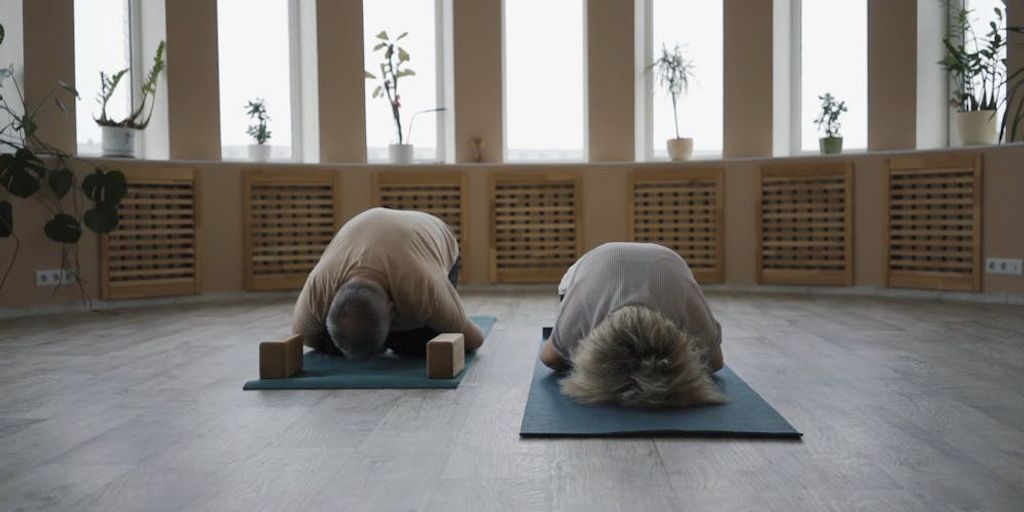
The Ultimate Guide to Choosing an Eco-Friendly Yoga Mat
Choosing an eco-friendly yoga mat is not only beneficial for the environment but also for your health and well-being. With a variety of materials, brands, and features available, making an informed decision is crucial. This guide will help you understand the different aspects of eco-friendly yoga mats, from materials and health benefits to brand comparisons and user reviews.
Key Takeaways
- Eco-friendly yoga mats are made from sustainable materials like natural rubber, organic cotton, and jute.
- Using non-toxic and hypoallergenic yoga mats can enhance your overall health and comfort during practice.
- Look for certifications and ethical manufacturing processes to ensure the mat is truly eco-friendly.
- Investing in an eco-friendly yoga mat can lead to long-term savings and a positive environmental impact.
- User reviews and expert opinions can provide valuable insights into the performance and durability of different brands.
Understanding Eco-Friendly Materials
Natural Rubber
Natural rubber is a popular choice for eco-friendly yoga mats due to its biodegradable nature. It is harvested from rubber trees, making it a renewable resource. Natural rubber mats provide excellent grip and cushioning, enhancing your yoga practice.
Organic Cotton
Organic cotton is another sustainable material used in yoga mats. It is grown without the use of synthetic pesticides or fertilizers, making it a healthier option for both the environment and the user. Organic cotton mats are known for their softness and breathability.
Jute
Jute is a natural fiber that is both durable and biodegradable. It is often combined with other materials to create a sturdy yet eco-friendly yoga mat. Jute mats offer a unique texture and are highly absorbent, making them ideal for hot yoga sessions.
Choosing a yoga mat made from eco-friendly materials not only benefits your health but also contributes to a more sustainable planet.
Health Benefits of Using an Eco-Friendly Yoga Mat
Non-Toxic Materials
Eco-friendly yoga mats are made from non-toxic materials that do not release harmful chemicals. This ensures that you are not inhaling any dangerous substances during your practice, which is crucial for maintaining good health. Switching to eco-friendly yoga mats offers health benefits, reduces carbon footprint, and promotes sustainability.
Hypoallergenic Properties
Many eco-friendly yoga mats have hypoallergenic properties, making them suitable for individuals with allergies or sensitive skin. These mats are often free from latex and other allergens, providing a safer and more comfortable practice environment.
Enhanced Comfort
Eco-friendly yoga mats often provide enhanced comfort due to their natural materials. They offer better grip and cushioning, which can help in preventing injuries and improving your overall yoga experience.
Choosing an eco-friendly yoga mat not only benefits your health but also contributes to a more sustainable and environmentally friendly lifestyle.
How to Identify a Truly Eco-Friendly Yoga Mat
Certifications to Look For
When choosing an eco-friendly yoga mat, it's essential to check for certifications that validate the mat's sustainability. Look for labels such as OEKO-TEX, GOTS, and FSC, which ensure the materials used are non-toxic and sustainably sourced.
Sustainable Manufacturing Processes
Eco-friendly yoga mats should be produced using sustainable manufacturing processes. This includes using renewable energy sources, reducing water consumption, and minimizing waste during production. Brands that are transparent about their manufacturing processes are often more trustworthy.
Ethical Brand Practices
Consider brands that prioritize ethical practices, such as fair labor conditions and community engagement. These brands often have a holistic approach to sustainability, ensuring that their products are not only good for the environment but also for the people involved in their production.
Finding the best yoga mat for your daily routine involves considering various factors, including the mat's eco-friendliness, size, and weight. Prioritizing eco-friendly options can significantly enhance your practice while supporting a healthier planet.
Comparing Popular Eco-Friendly Yoga Mat Brands
Brand A
Brand A offers a range of eco-friendly yoga mats made from natural materials such as cork and natural rubber. These mats are designed to provide excellent grip and durability, ensuring that you can find your balance on the best non-slip yoga mat. Additionally, Brand A is committed to sustainable practices, using recyclable and biodegradable materials in their products.
Brand B
Brand B focuses on creating yoga mats that are not only eco-friendly but also stylish. Their mats are made from organic cotton and jute, providing a soft and comfortable surface for your practice. Brand B promotes sustainable practices for a greener future, ensuring that their manufacturing processes are environmentally friendly.
Brand C
Brand C is known for its innovative approach to eco-friendly yoga mats. They use a unique blend of natural rubber and recycled materials to create mats that are both durable and sustainable. Brand C also emphasizes ethical brand practices, ensuring fair labor conditions and environmentally responsible production methods.
When choosing an eco-friendly yoga mat, consider the materials used, the brand's commitment to sustainability, and the overall quality of the product. This will help you make an informed decision and support brands that prioritize the environment.
Caring for Your Eco-Friendly Yoga Mat
Cleaning Tips
Regular cleaning is essential to maintain the hygiene and longevity of your eco-friendly yoga mat. Use a mild, natural cleanser to avoid damaging the material. A simple solution of water and vinegar can be effective. Wipe down your mat after each use and deep clean it once a month.
Storage Solutions
Proper storage can significantly extend the life of your yoga mat. Always roll your mat with the top side facing out to prevent curling. Store it in a cool, dry place away from direct sunlight to avoid material degradation.
Longevity Practices
To ensure your mat lasts as long as possible, avoid wearing shoes on it and keep it away from sharp objects. Rotate your mat regularly to distribute wear evenly. Investing in a high-quality mat bag can also protect it from dust and damage.
Taking good care of your eco-friendly yoga mat not only extends its life but also ensures you get the best performance and comfort during your practice.
Cost vs. Value: Investing in an Eco-Friendly Yoga Mat
Initial Investment
When considering the initial investment in an eco-friendly yoga mat, it's important to recognize that these mats often come with a higher price tag compared to conventional options. This is due to the use of sustainable materials and ethical manufacturing processes. However, the benefits of investing in a premium yoga mat can be worth it if you practice regularly and need a mat that offers superior comfort, support, and durability.
Long-Term Savings
While the upfront cost may be higher, eco-friendly yoga mats tend to offer long-term savings. Their durability means they need to be replaced less frequently, reducing the overall cost over time. Additionally, many eco-friendly mats are designed to withstand rigorous use, making them a cost-effective choice for dedicated practitioners.
Environmental Impact
Investing in an eco-friendly yoga mat also has a positive environmental impact. These mats are made from sustainable materials that are biodegradable or recyclable, reducing the strain on landfills. By choosing an eco-friendly option, you are contributing to a healthier planet and supporting brands that prioritize environmental responsibility.
Choosing an eco-friendly yoga mat is not just a financial decision but a commitment to a sustainable lifestyle. The long-term benefits for both your practice and the environment make it a worthwhile investment.
User Reviews and Testimonials
Real User Experiences
Many users have shared their positive experiences with eco-friendly yoga mats. One user mentioned, "If you love yoga outside, the Primasole Foldable is a great choice to take to the park or beach or to throw in your backpack for a flow in nature." This highlights the convenience and portability of eco-friendly mats.
Expert Opinions
Experts agree that eco-friendly yoga mats offer numerous benefits. They emphasize the importance of choosing mats made from non-toxic materials to ensure both personal health and environmental sustainability. Experts also note that these mats often provide better grip and comfort compared to traditional mats.
Community Feedback
The yoga community has been vocal about their preferences for eco-friendly mats. Many practitioners appreciate the sustainable manufacturing processes and ethical brand practices that go into making these mats. They also value the long-term durability and the positive environmental impact of their choices.
Choosing an eco-friendly yoga mat is not just a personal decision but a commitment to a healthier planet and a more mindful practice.
Our customers love Yune Yoga products! From the superior grip of our mats to the durability of our straps, the feedback has been overwhelmingly positive. Don't just take our word for it, see what others are saying and find your perfect yoga companion today.
Conclusion
Choosing an eco-friendly yoga mat is a significant step towards a more sustainable lifestyle. By considering factors such as material, durability, and end-of-life disposal, you can make an informed decision that benefits both your practice and the planet. Remember, every small step counts when it comes to environmental conservation. So, take your time, do your research, and select a yoga mat that aligns with your values and needs. Your commitment to eco-friendly choices can inspire others and contribute to a healthier, greener world.
Frequently Asked Questions
What makes a yoga mat eco-friendly?
Eco-friendly yoga mats are made from sustainable materials like natural rubber, organic cotton, or jute. They avoid harmful chemicals and are produced using environmentally friendly processes.
Are eco-friendly yoga mats more expensive?
While the initial investment may be higher, eco-friendly yoga mats often offer better durability and long-term savings. They are also healthier for both you and the environment.
How do I clean my eco-friendly yoga mat?
Cleaning methods can vary based on the material. Generally, you can wipe down your mat with a mixture of water and mild soap. Always check the manufacturer's instructions for specific care guidelines.
What certifications should I look for in an eco-friendly yoga mat?
Look for certifications such as OEKO-TEX, GOTS (Global Organic Textile Standard), or FSC (Forest Stewardship Council) to ensure the mat meets high environmental and safety standards.
Can I use an eco-friendly yoga mat for other exercises?
Yes, eco-friendly yoga mats are versatile and can be used for various exercises, including Pilates, stretching, and general fitness routines.
How long do eco-friendly yoga mats typically last?
The longevity of an eco-friendly yoga mat depends on the material and frequency of use. With proper care, these mats can last several years, offering both durability and sustained performance.


